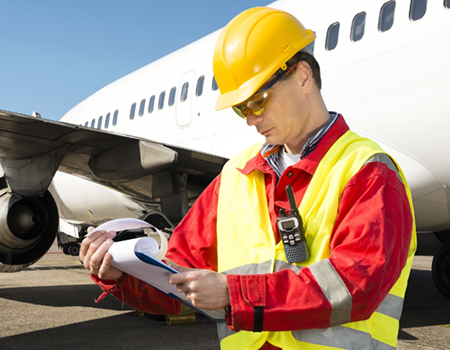
Frequency – In The Sunday Times
May 31, 2020
When does Frequency come into play? … Part 2
June 6, 2020Scenario 1: Diversion
If you can picture an aircraft on a busy approach into Naples one aircraft 5 miles ahead and another 5 miles behind in the middle of the summer. The aircraft ahead lands with an unusually large amount of tyre smoke then instead of vacating to the left as expected they stop dead in the middle of the runway. Now at 200ft above the runway the controller instructs you to discontinue your approach and “go around”, the previous aircraft has burst 2 tyres and will require a tow off the runway. This will take 15 minutes to clear the aircraft and debris. You only have 40 minutes of additional fuel and you must land with at least 30 minutes or you are into a MAYDAY yourself.

The process …
A diversion is one of the most dynamic semi regular situations pilots deal with. An aircraft may divert for a number of reasons, sick passenger, technical issue, unable to land at destination airport, etc. I will look at the scenario of a short haul aircraft diverting in Europe.
Once the decision has been made to divert rather than returning to the departure airfield or continuing to the destination often the Captain will take control of the aircraft while the First Officer uses a combination of the aircraft navigation display, MCDU (aircraft computer) and charts to identify the closest airfields, their runway directions, length and approaches available. The first officer will also get the weather for these airfields either through ACARS or VOLMET, which is a reginal VHF weather frequency which needs to be found in the aircraft manuals, if ACARS is not available.
Once the information has been gathered both pilots will discuss the options available, the advantages of each and possible threats associated with them before deciding on the best option. Once the diversion airfield has been chosen the first officer will generally contact air traffic control (ATC) using the VHF radio, request and coordinate the diversion before briefing ATC on the situation and reason for the diversion and any specific requirements at the diversion airfield and their level of urgency.

Once this is done the Captain is likely to hand over control of the aircraft to the First Officer who will also be in constant communication with A.T.C. as they try to navigate them around other aircraft towards the diversion airfield. The captain will at this time most likely call for the senior cabin crew member to enter the cockpit and will brief them on the situation and the intention to divert and give them a time line. Once this is complete they will address the passengers and inform them of the situation and intention to divert. When this is complete they will request a further update from the First Officer and they will start planning, programming and checking their approach into the airfield, which is potentially one that
neither pilot has been to before. This must be structured and methodical so as not to miss any important information or threats that will affect their approach or arrival.
The issue …
The crew are now most likely in a critical phase of flight and preparing for the approach, in a lot of contact with A.T.C. and managing the configuration and decent of the aircraft. This point on is considered to be safety critical where the pilots should not be unnecessarily interrupted. This will all usually take between 5-20 minutes from deciding to divert to being on the ground depending on the level of urgency and proximity to an airport.
Down the list of priorities is contacting the company operations controllers to inform them of the diversion as this would require pulling out the flight NOTAM (Notice to Airmen) pack and trying to find the specific ACARS contact code for flights operations at their home base, this code when found is a 9 letter code which must be manually entered into the MCDU along with the message using a simple and non-ergonomic keypad. This process will take the attention of a single pilot for 1-2 minutes and as a result rarely happens in a diversion scenario.
The reason we are forced to use this poor ACARS system is that the other systems are even less appropriate, VHF is too short range, Operations Control don’t have a HF receiver, CPDLC can only send specific requests to A.T.C., phones don’t work etc.

Frequency …
In contrast, Frequency can download the weather and contact operations control with a single button contact by voice with unlimited range thus taking only seconds to contact them and allowing their input into the decision making which could be vitally important to the operation. This fast and efficient communication through a secure communication system is key to having a positive outcome in this dynamic, time critical and potentially sensitive scenario. Once they have been informed they can start to organise handling at the diversion airport making the arrival, turn around and subsequent departure a lot smoother reducing the overall delay due to the diversion.
Frequency promotes distributed decision making through open communication on the ground, in the air and at the destination which reduces delays and increases safety within an airline.
Frequency at Spark Crowdfunding




